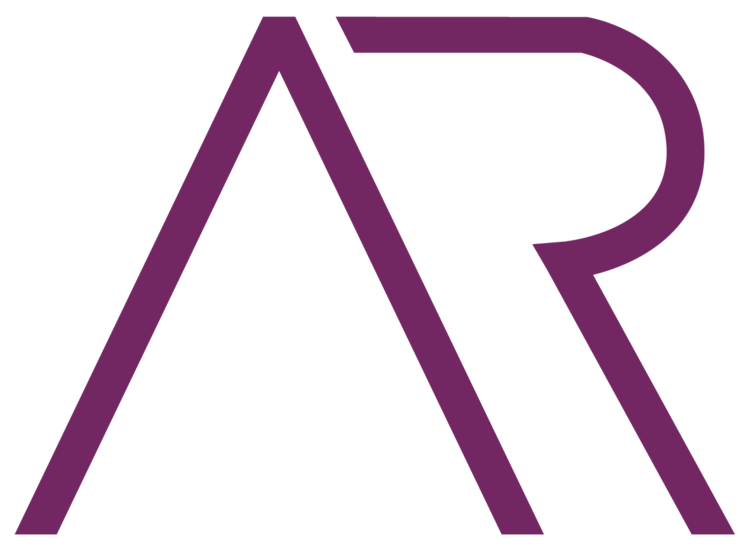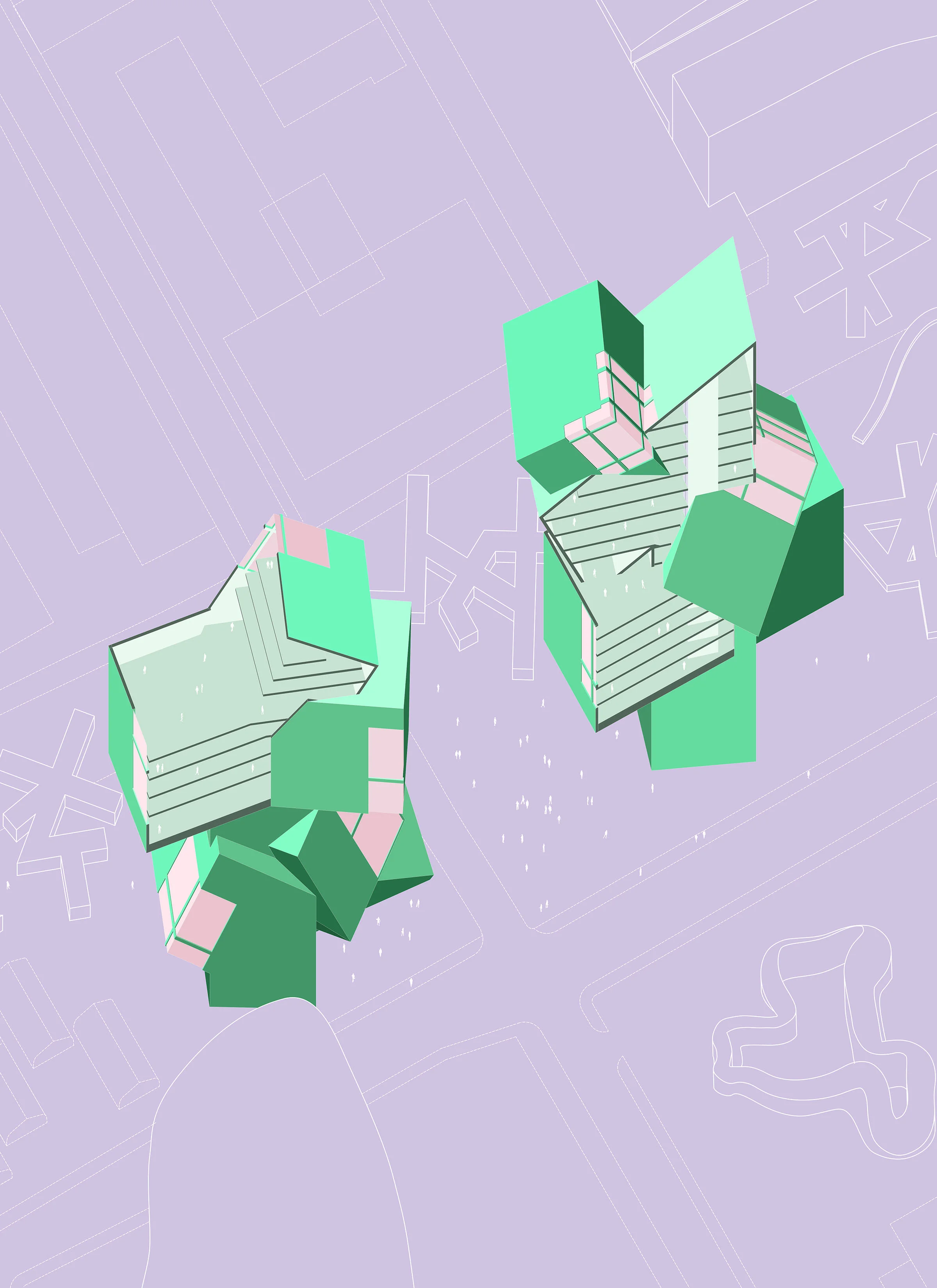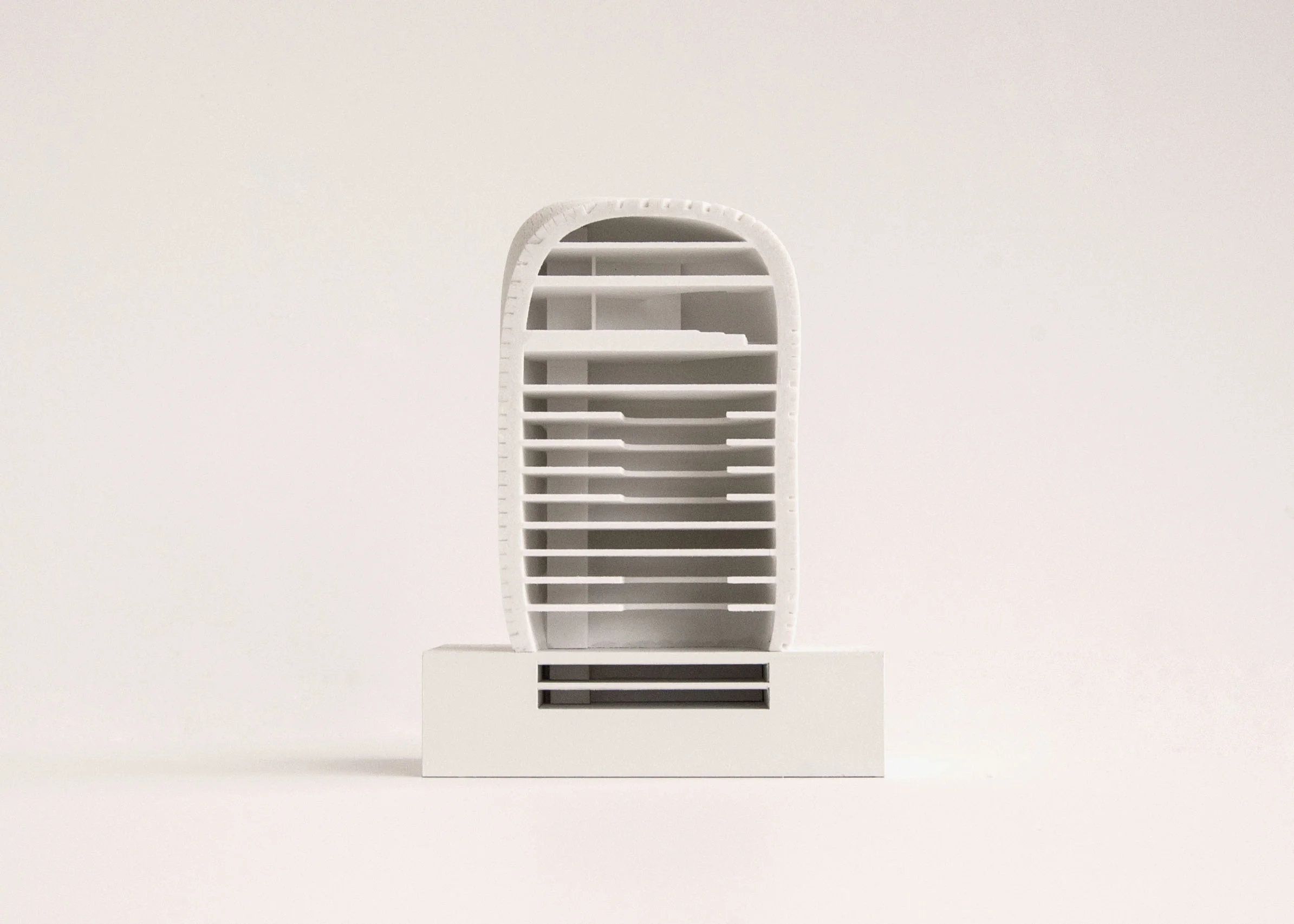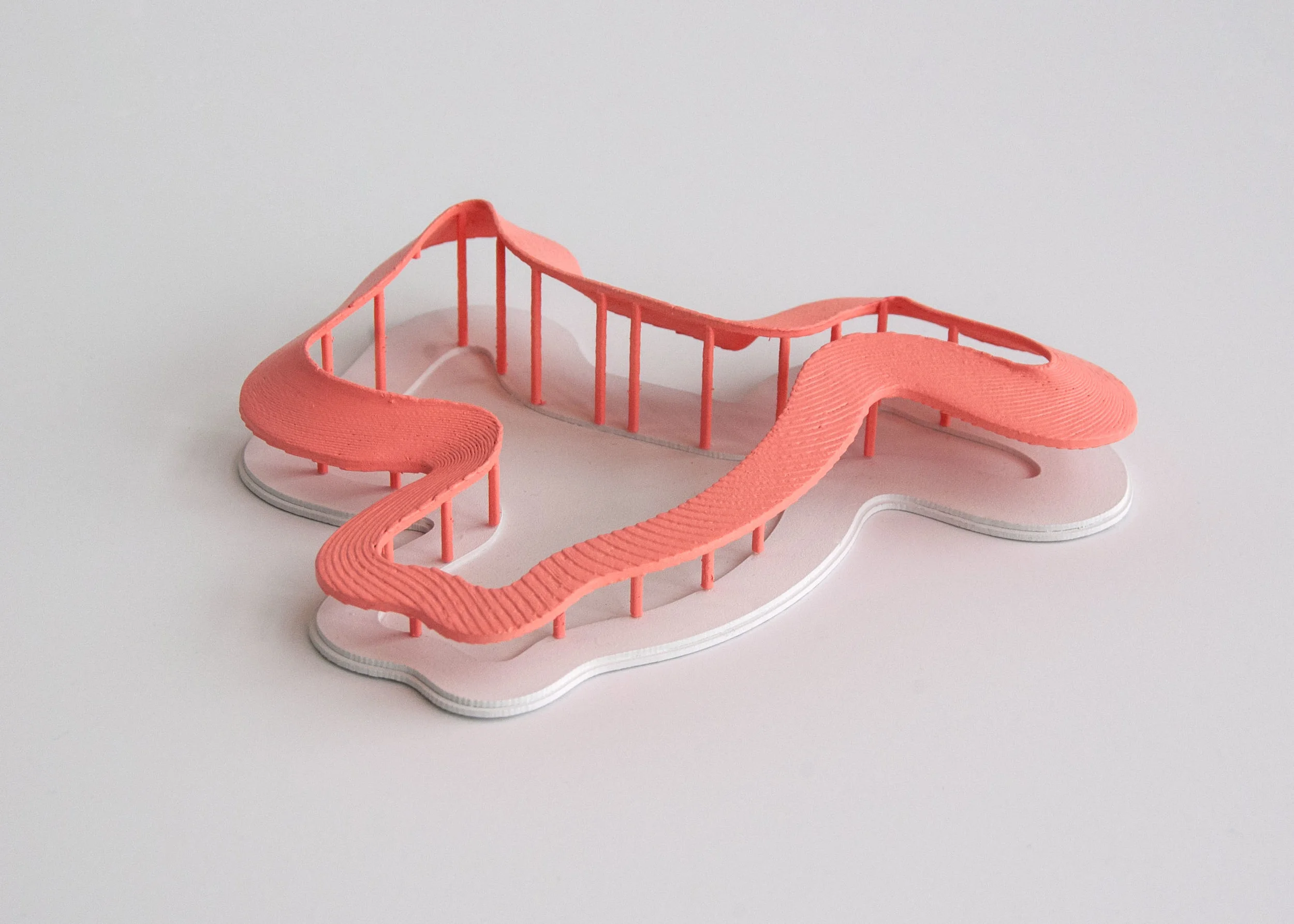THE PAINTING MACHINE
SPRING 2016
The Painting Machine is the result of a two-part studio which starts with a semester of research in which the paintings of contemporary artist Jonathan Lasker are studied under the pretense that painting could operate as the diagram for architectural and urban design. Lasker's paintings are broken down into three elements: shapes, squiggles, and grids; which when paired with rigorous application of color produce "radical, imaginative" diagrams for architectural discourse.
The site given is a series of former warehouse lots to the east of the Eastern Market neighborhood in Detroit, Michigan which due to government programs will see a population increase of 47,000 over a few years. This increase in population creates the need for a series of buildings (independent from housing) which include: A federal building (including library/studying center), an office tower, an office/hotel tower, a large flat warehouse building, and a potential amount of performance space.
"THE PAINTING MACHINE"
The Painting Machine explores painting as a generator of urbanism.
There are a series of paintings within Jonathan Lasker's catalog that showcase a multiplicity of grid segments, squiggles, and shapes that are so dense that they become a "constellation of differences," ceasing their awkward discreetness and becoming a singular monolith.
Detroit is an incredibly diverse city with a rich history of change, and its new residents will also be "different;" they would benefit from the forced awkwardness-turned-monument of the radical differences found in Lasker's paintings.
These problems of organization within difference aren't exclusive to architecture or painting; rather it is asserted that architecture and painting have the same problem to solve; so they can have the same solution.
Lasker's objects aren't necessarily individually successful, only when they are within this field of difference do they make sense.
Therefor, in order for Detroit's new urbanism to work as a whole, the individual forms may only need to get more different. Detroit's architecture isn't yet weird enough.
The Painting Machine takes underused pieces of Detroit's urban context and digests them into "Lasker-ized" awkward objects to be reintroduced to the urban field; pushing the new typology.
The machine itself, the dark blue-purple "flat" building, is a squiggle grid and shape all in one. It collects pieces of Detroit, generates them into pieces of painting, and moves them into the Dequindre Cut (circulation path running through the site) where they grow up, crawl out, and move around the city. It contains large mixed-use warehouse space as well as an architectural studio to produce new objects.
The two towers, known as the Fraternal Twin Towers, are jagged pieces of the Woodward Plan for Detroit that have misunderstood their role as street plan and instead stand upright as architectures.
The federal building, formless and red (and showcased in a sectional model) is the actual Detroit street plan's rectangle trying to hide its normalcy from the other forms by softening its own defining edges.
The squiggle does not want to be a building. It is too expressive to be fully contained, and instead is an open-air performance pavilion.















































